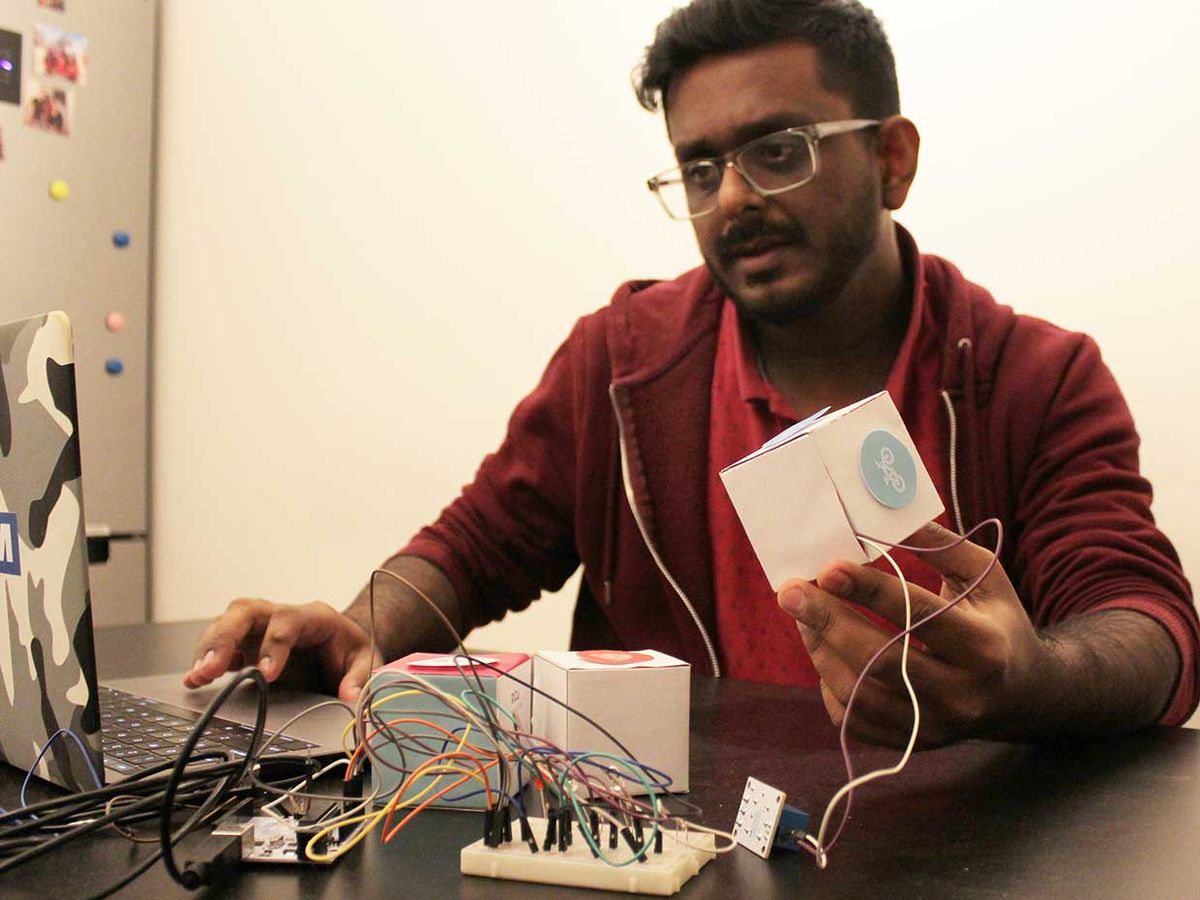THE INSTITUTE As COVID-19 cases continue to increase around the world, several countries have gone back into lockdown to prevent the virus from spreading. This means many of those who have returned to the office will be working from home again.
Working remotely brings with it a unique set of challenges, mainly how to maintain a work-life balance. This can have a direct impact on the physical and mental health of both employees and their families, according to Mental Health America. Many remote workers struggle with either working long hours and ignoring their personal life or getting distracted during the work day with personal matters.
Bibin Parukoor Thomas, an IEEE graduate student member at Delft University of Technology in The Netherlands, has developed a device that aims to help remote workers strike a balance between work and self-care. The system—called the Ritual Cube (RiCu)—provides users with a way to stay focused on specific tasks, whether work-related or personal, by collecting data about the worker’s day-to-day activities. Users can use the data to reflect on their day and help them plan future goals and how to make them achievable.
The Institute asked Thomas about how RiCu works.
This interview has been edited and condensed for clarity.
What problem are you trying to solve?
Since March, COVID-19 has [created] the worlds’ largest work-from-home experiment. [Since] employers don’t have direct physical access to the employee or his working conditions, it is difficult to assess his well-being. [Because of this,] it is [primarily] up to the employee to take care of himself.
I think a [healthy balance] of work-life and personal-life is needed for remote workers [to maintain a high level of] well-being. Personal satisfaction is a major measure of well-being and maintaining work-life balance may lead to better personal satisfaction, but there is no tool or system that helps employees achieve this satisfaction.
What technologies are you using?
The RiCu is a white six-by-six centimeter cube that is connected via Bluetooth to a computer application I created using the design platform Invison. The RiCu consists of a spatial orientation sensor that analyzes the cube’s position, a haptic sensor that senses the user’s touch, a Bluetooth module to communicate the cube’s position and status to the connected computer, and an Arduino microcontroller that acts as the system’s brain.
Explain how your project works.
At the start of his day, the [person enters] goals [for] his personal and work-related priorities on the app. The application collects data about the [amount of] time [it takes] the user to complete [specific] goals such as completing a report, working on a project, or scheduling doctor appointments.
Rituals are selected by the user and stickers representing each one are assigned to each side of the cube. The sticker is color-coded—green means it is work related and blue signifies a [personal] task.
The individual activates a ritual by double tapping the side [of the cube] with the correlating sticker on it. Once the task is completed, the user flips the cube over to mark the end of the activity.
The device tracks the [amount of] time [it took] to complete each goal and the data is shared with the user at the end of each day [through the computer application]. The remote worker can use the data to reflect on what he accomplished that day and help him set achievable goals in the future.
What challenges have you faced, and how did you overcome them?
The main challenge was gathering data on what satisfaction means to remote workers. It was also difficult finding participants to test the RiCu.
To overcome this, I created a communication bubble [a combination of collaborative communication tools Zoom, Miro, and Google Documents] with three families, which provided [me with] six remote workers who tested the technology.
What is the potential impact of technology?
It seems that people will be working from home for the foreseeable future, and new measures of monitoring employee productivity will likely evolve. As most employees perform computer-based activities, there is an increasing demand for employee-tracking software.
Some [tracking] strategies, such as keyboard tracking, live video feeds, and location tracking, however come at the cost of [violating] employees’ privacy and reducing their sense of autonomy. The RiCu however, doesn’t violate the employees’ privacy, and it ensures their personal satisfaction, which [can] yield more productivity for the organization.
How close are you to the final product?
I have created a low-fidelity prototype made of basic components such as an Arduino board, electronic sensors, and paper. The [final] construction needs to be robust in order to be ready for prolonged use. It will need more work and collaboration with industry to make a market-ready product.
I especially want to coordinate with Human Resources departments of various companies to make sure the product is aligned with the companies' parameters on which they evaluate employee performance.
How can other IEEE members get involved?
If fellow IEEE members are interested in collaborating and [helping to] enhance RiCu, they can email me.



